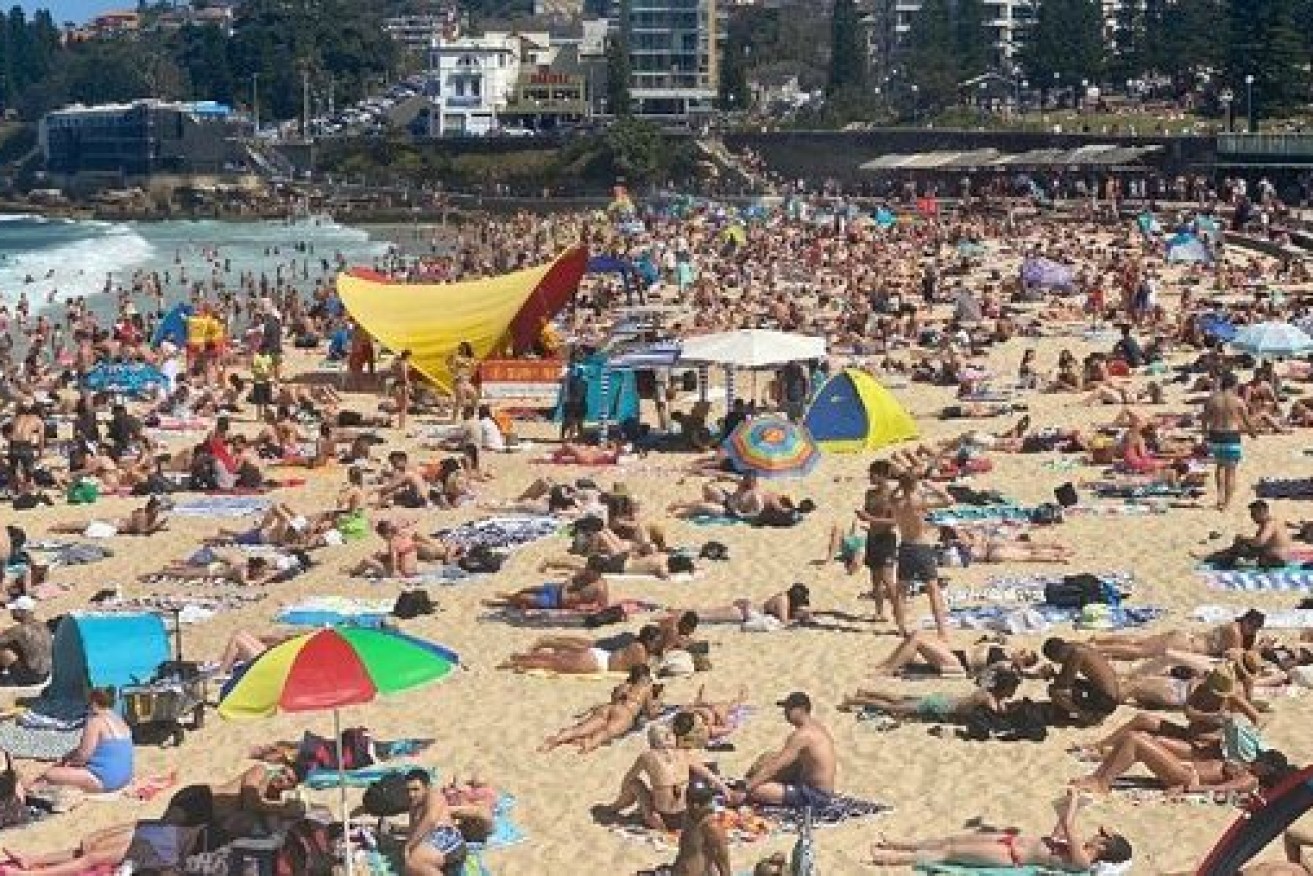Health authorities on high alert as crowds flock to Sydney beaches


Some of Sydney's beaches, including Coogee beach, are set to close on Monday afternoon. Photo: ABC News
Health authorities are urging people to stay away from Sydney’s eastern suburbs beaches as huge crowds enjoy temperatures in excess of 30 degrees and the freedom of a public holiday.
Randwick Council issued a plea on social media at 1pm on Monday afternoon for people thinking about heading to Coogee Beach to rethink their trip and make other plans including visiting nearby shops and cafes.
Waverley Council said Bondi Beach also issued a warning, declaring the beach was nearing capacity and access may be restricted if people continued to arrive throughout the afternoon.
Nine News reported North Cronulla beach put up signs at 4pm and was stopping people from coming on to the sand. However, beachgoers already with a spot on the beach were not asked to leave.
Tweet from @RandwickCouncil
The scenes were reminiscent of early in the pandemic, when many Sydney beaches – including Bondi – were shut because of overcrowding.
About 1pm on Monday, Waverley Council said Bondi beach was nearing capacity.
“Waverley Council wishes to advise that Bondi Beach is nearing capacity. If people continue to come to Bondi Beach and crowds grow further, restricted access to the sand is likely to be implemented within the next hour 2-3pm,” it said in a statement.
“If you haven’t left for the beach yet, please rethink your trip and check on capacity later in the day.”
The council said rangers and “beach ambassadors” would keep monitoring visitor numbers and make sure gatherings did not exceed 20.
Tweet from @WaverleyCouncil
In the Royal National Park, Wattamolla and Garie beaches were closed after car parks reached capacity. The road into the beach carparks was also closed.
The crowds across Sydney came as NSW had its 10th day in a row without locally acquired virus cases.
Tweet from @Volodub
But NSW health authorities remain concerned about a plunge in testing numbers – Monday’s results came from just 4789 tests in the 24 hours to 8pm Sunday, little more than half the tests in the previous period.
Queensland also had no new virus infections on Monday.
Victoria had nine, and no COVID deaths for the first time since September 15. Melbourne has begun its 14-day countdown to October 19, the next date for virus restrictions to be wound back, as chief health officer Brett Sutton conceded it’s “line ball” whether the city will hit its targets.
“My gut feel is that it will be a line ball. Look, it’s not a certain one way or the other,” Professor Sutton said on Monday.
Under the Victorian government’s plan, Melbourne must have a 14-day average of fewer than five new infections, and fewer than five mystery cases, before it can move to its next step out of restrictions.
But Professor Sutton said missing those targets might not stop measures being eased.
“We’ve always said that we need to look at what those cases are. If the outbreak numbers are part of that 14-day average that we get to on October 18 or 19, we will look at exactly how well that’s controlled,” he said.
“We can [also] have more than five mystery cases. We’d have to see exactly where we were at at that time, including the trend.”
Tweet from @Lord_Sugar
On Sunday, Premier Daniel Andrews said he was “as confident as you can be” that Victoria would meet its key average goal.
Also on Monday, state Education Minister James Merlino announced a new plan for Melbourne students to return to classrooms. VCE and VCAL students and all primary school children begin term four this week, while year seven students go back on October 12.
Mr Merlino said students in years three-10 would return from October 26.
“This is the light at the end of the tunnel,” he said.
All children in regional Victoria also returned to school this week.
Elsewhere, the Northern Territory said on Monday, it would remove most of regional Victoria from its list of COVID hotspots from November 2.
Metropolitan Melbourne and the local government areas of Greater Geelong, the Macedon Ranges, Mitchell and East Gippsland remain hotspots – although Chief Minister Michael Gunner has left room to include the four regional shires closer to the date.
“All the numbers basically amount to this – regional Victoria has crushed the coronavirus,” he said.








